Wireless Intel – for Hunting or Surveillance

This post is somewhat of an uneasy departure for me since the subject lacks a trigger or means to launch a projectile. Worse, it’s even a bit techy. Still, due to the increasing popularity of cellular trail cameras, I figure the topic is worth a shot. But first, a disclaimer: If you’re expecting coverage of the system’s technical details, this treatise will likely disappoint. Then again, those heavily into the weeds are likely already conversant in cellular-based technologies.
Others (including me) are familiar with common trail (or game) cameras. Capable of producing time-stamped digital photos or videos for relatively modest costs, they’re now pretty much standard kit for deer hunters. Those of us in this category are invariably shooters but not everyone that shoots are hunters – which doesn’t discount the value of trail cameras for other purposes, such as surveillance.
Still, unlocking the digital treasures lurking within an SD card requires a trip to the camera, sometimes after a lengthy journey. And I’m probably not the only one who misplaced a card or forgot to turn on their camera. Which leads us to cellular trail cameras as an alternative.
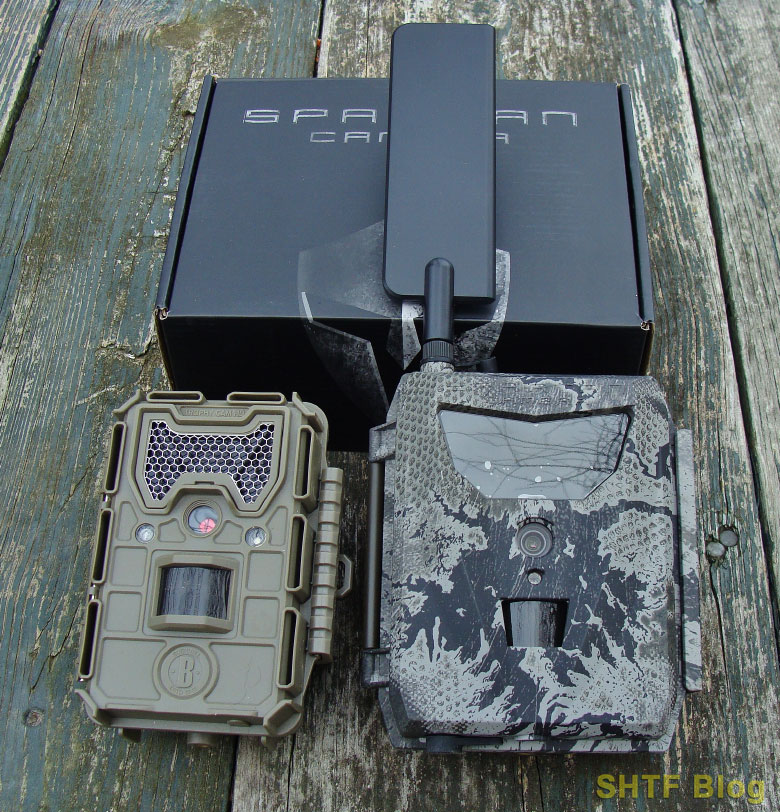
Table of Contents
The Cellular Advantage
We got clobbered by a fierce rainstorm in the midst of the past deer season, driven by howling winds. I was worried about the status of a pop-up blind by a small clearing on my son’s property. Fearing it might have flown the coop, I was prepared to head there for a check – when I remembered it was facing a cellular camera; a Spartan GoLive capable of transmitting live images.
- Powerful Live Streaming: Watch wide-angle views on what is happening in front of your camera at any time. The Spartan GoLive streams video with sound at up to 30 fps so that you can see what is happening even if the camera is not triggered. Perfect for monitoring your property or worksites, this live streaming option is easily accessible from the home page of the app when you check your photos.
- Easy-to-use Spartan Camera Management App: Remotely change your camera settings, activate the live stream, download pictures and videos, check your camera’s status, and share your cameras right from the Spartan Camera Management App. You will receive notifications right to your phone or tablet whenever the camera sends a picture, video, or status report.
I texted my son to ask if he could “log in” for a look. Although he was working elsewhere at that moment, within minutes, a closeup image of dirt and leaves materialized on my end. At that point there was nothing to do but jump in the truck for a short drive and a longer hike. Turned out the pop-up blind was intact, but the tree the camera was mounted to had done a face-plant in the field, lens-down.
Miraculously, the camera and accessory solar panel appeared to be undamaged and, after studying their articulated mounting systems, I realized I could adjust them to affect a temporary repair. With the solar panel reoriented toward the sun, and the camera angled back toward the blind, I used my cell phone to call my son so he could talk me through its final alignment through live streaming. It was an education experience, which takes us to the next chapter.

The downed tree raised concerns about another Spartan camera, located in a hard-to reach area accessible by canoe. By mid-deer season it becomes a deer hunting honey hole as long as it remains undisturbed – an ideal spot for cellular intel. This particular camera didn’t offer live views, but a status check was still possible.
After accessing Spartan’s website, my son navigated to the camera and opened a display of thumbnailed images (possible on any remote device). Clicking on the most recent thumbnails opened a series of date and time-stamped photos. Good news and great intel! Photos of a couple decent bucks appeared beyond the passing of the storm.
Lesson learned: Cellular cameras do offer unique advantages – assuming their “technical” aspects can be sorted out.
The Spartan System
The language on Spartan’s website summarizes the advantages of cellular cameras: “Get photos and videos of what is happening in real-time sent directly to your smart device or web portal. Camera settings can be changed directly from your smartphone via the app or web portal, eliminating the need to disturb the area just to change a setting.”
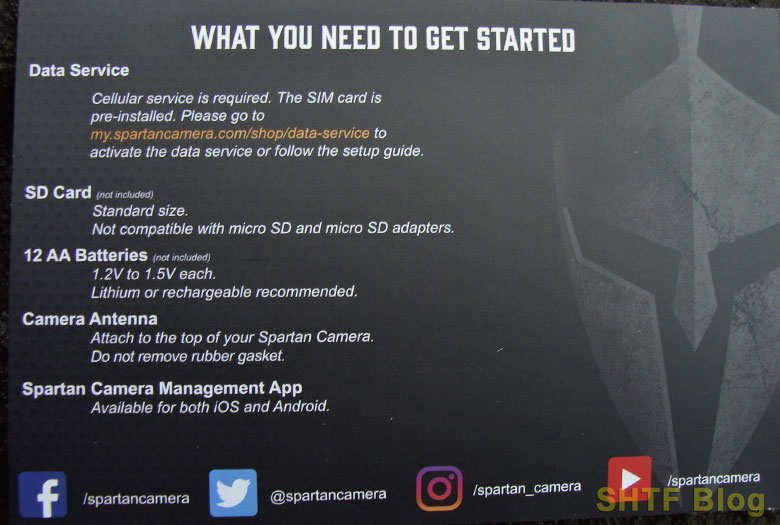
Getting started: The basics, per the literature included with a Spartan cellular camera. – batteries and SD card not included.
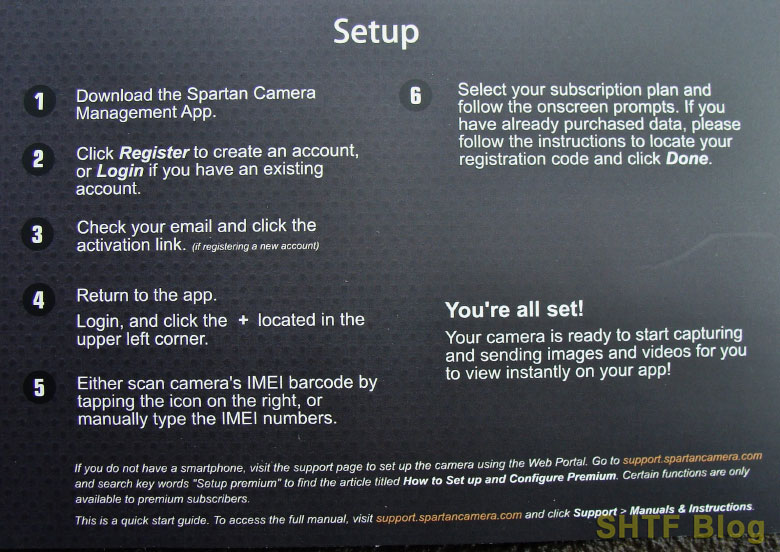
I was under the impression that a PC or phone might be deluged by a torrent of photos, but that’s not a concern. Whether using the cellular carrier of your choosing (AT&T, Verizon) or Spartan’s proprietary “Shared Plan,” the camera’s images are transmitted to Spartan’s server.
After setting up an account, they can be accessed as follows:
- If using a PC, the portal can be opened through Spartan’s website.
- Or install the Spartan App and navigate to your pictures via a smartphone or tablet (with notifications by text or email).
- Images appear as thumbnails specific to the camera (or one of several). After selecting a thumbnail, a camera-grade image will appear.
Features
Spartan cameras are based on two primary designs sold as GoCams and fuller-featured GoLives. As noted above, their settings can be managed remotely via a PC or smartphone thanks to smart switching.
Typical of most trail cameras, the photos include the date, time, temperature and moon phase; however, the location can also be entered and displayed for the management of multiple cameras.
- Resolution choices include 3MP, 5MP, or 8MP.
- The cameras can also be set to take time-lapsed photos, which converts them into “plot watchers.”
- Videos are another option (with sound).
- The GoLives can be remotely set to transmit live-streaming views, complete with audio.
- Detection range is 60 -80 feet. Flash choices are blackout or white IR, (similar to standard trail cameras).
- The Spartans are backed up by SD cards.
- Images can be saved and managed, or shared (still, video or live).
- The system can also accommodate multiple cameras, as named by their user.

Data & Power
Because a few of my son’s Spartans are older 3-G cellular versions, they struggle with today’s 4-G systems. The current cameras are good to go; however, those in heavily trafficked locations may generate more transmissions (data) and burn more juice. Fortunately, these issues can be easily resolved and, concerning data, Spartan even offers their own wireless plans.
For $16 per month (cancellable), I could network directly through Spartan through one of their M-series cameras. As of December 2022, additional Spartans can be added for $5 more per month. These fees reflect the basic plan, and multiple cameras will share the plan’s allocated data, but more generous alternatives are available for reasonable costs.
The M-Cameras (multicarrier) choose the available carrier and the SIM cards are preloaded. No roaming fees either. Allocated data (and power) can be conserved through the deactivation of features – if these steps are even necessary. Spartan’s basic monthly allowance translates to around 2000 photos!
For a more detailed explanation this technology, Jase Outdoors has a highly informative YouTube video that covers Spartan Camera capabilities and operation:
Various Cameras
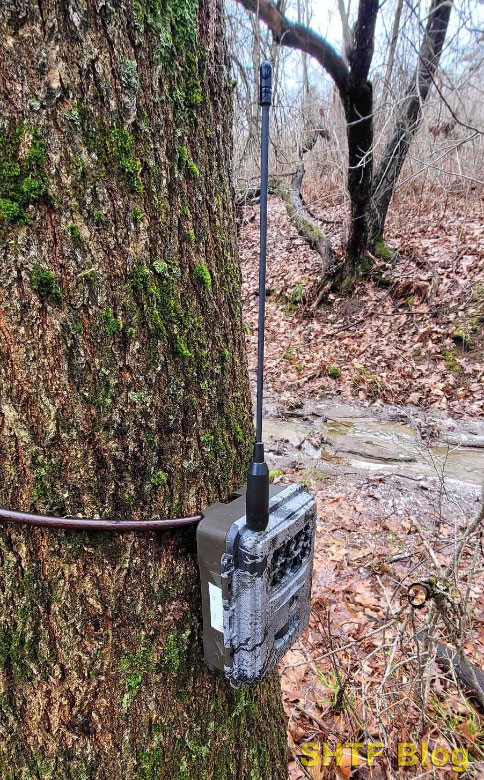
Amazingly, one of my son’s Spartans has been transmitting photos off its same set of batteries for more than a year. The camera, a GoCam 4G/LTE, has fewer features than the GoLive, but requires less power.
This one provides ongoing intel from a backwoods deer trail near a sanctuary zone – the type of spot best left undisturbed. Traffic is frequent but not nonstop, so the Go Cam can handle the job, even during our frigid Northern New England winters. Powered by twelve AA batteries, it endures through the use lithium batteries. If more juice was required, its power could be augmented by a Spartan Solar Kit (see below).
The GoLive (a successor to the similar Ghost) is available in versions that include a wide-view model. It’s live-streaming capability turns the GoLive it into a surveillance camera, complete with recordable and screen shot options via “Smart Switching.”
- Includes Spartan GoCam 4G LTE Wireless Trail Camera and Tree Mount by TRAIL CAMS GALORE , a Trademarked brand
- Ready to Use Out of the Box: Sim card included. Simply purchase service from Spartan, set your desired picture parameters, and your camera is ready to use
Because they consume more data and power, the GoLives incorporate a rechargeable battery, which can be energized by an optional solar panel. One potentially useful feature (free) is GPS tracking with Google Overlay, that will function with the camera “off” and its batteries removed!
One of my son’s GoLives took an unauthorized thirty-mile trip but was quickly located and recovered through this feature.
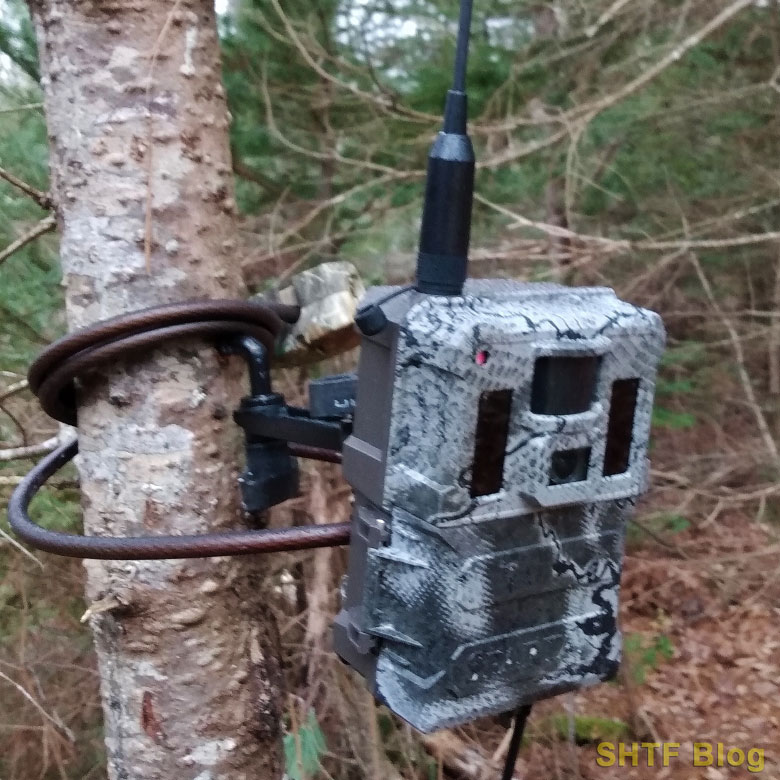
GoLives are somewhat larger and heavier than GoCams, but either will blend into most wooded backgrounds about as well a standard trail camera. Of course, a solar panel changes that. For more information about their features and technical details, Spartan offers a comprehensive knowledge link.
Useful Accessories
The Go-Lives listings include a link to a number of interesting accessories (auxiliary batteries, etc.) but this short list could be useful for many of us.
Flex Antenna
The Spartans ship with plastic covered “paddles,” but their Flex Antennas are less susceptible to damage incurred during transportation or from rodents. If stowed separately in a backpack, installation is a breeze once the camera is securely mounted.
Solar Panel Kits
If additional juice is called for, Spartan lists solar kits with 10 or 15-Watt panels. Their connecting wires are shielded to help protect them from gnawing critters.
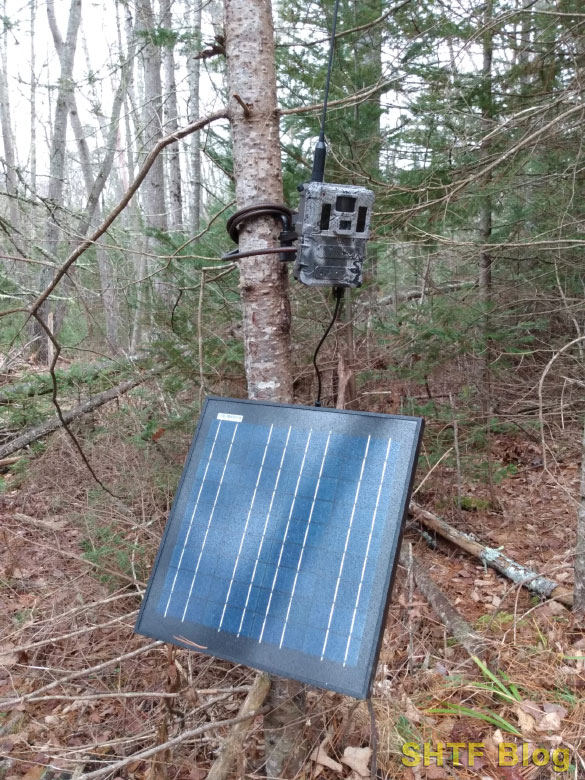
For GoCam owners, Spartan sells a complete solar kit that includes the panel, mounting bracket, an external 12-V battery and box, and the connecting wires. Installation is simple but the downside is, at $200, it costs as much as the camera.
Because LiveCams incorporate a rechargeable battery, they only require the panel, bracket and plug-in connectors, available as a kit for less. A dozen AAs could provide backup during long stretches of cloudy weather, but a solar-powered LiveCam will run without them. Factoring in the cost of lithium batteries, a solar kit could be cheaper in the long run.
Security Box
It’ll probably take more than a metal box to dissuade a determined thief, but a box might discourage passersby. Access to the camera’s settings and SD card is also denied and the shielding could discourage a malicious bear (or other annoying critters) near a bait site. The boxes, which are model specific, can be mounted via lag screws or cable locks.
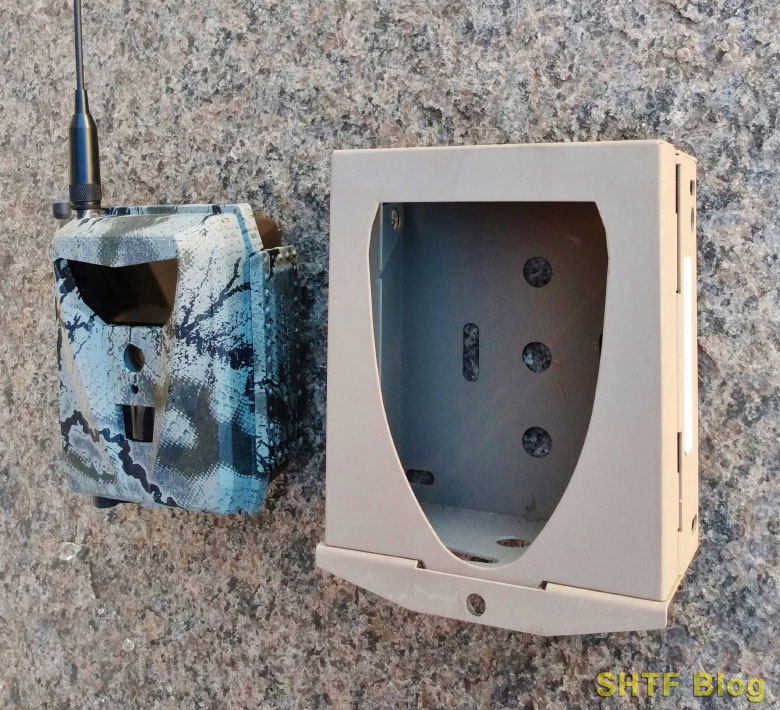
No products found.
Mounts
Although not essential, Spartan’s 360-degree mounts can come in handy for fine-tuning camera and solar panel setups. The versions in the photos are larger “Quick Aims” but Spartan also lists a compact Mini Stealth version. These are relatively low-cost and can be positioned in different areas to move the camera to the spots deer eat in different seasons.
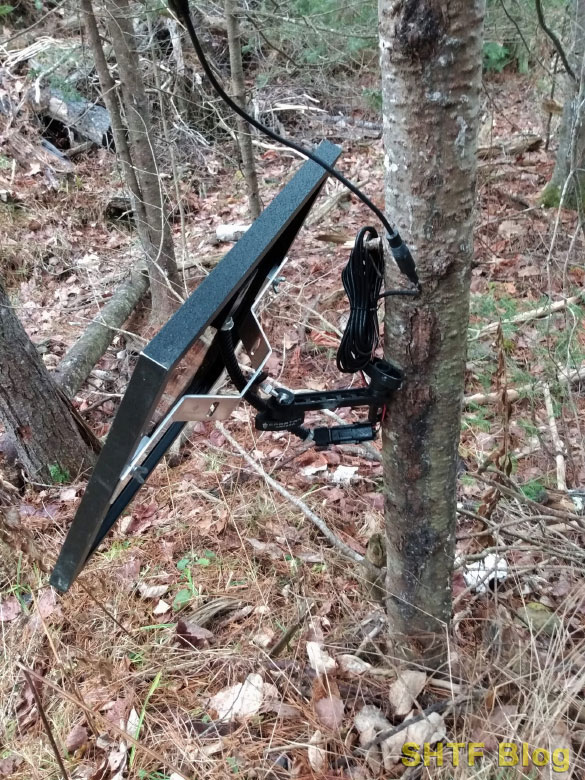
- 3 3/4" in length
- Weighs 4 oz.
Why Spartan?
Spartan is located here in the USA. Repairs are handled in-house, and tech service is available. Call their Georgia-based helpline and you’re connected to the folks that produce the products for a pipeline to meaningful support (as opposed to guesses from big-box sales staff).
Importantly, the cameras permit two-way communication. If you’re stymied a factory tech can remotely access the camera (via your password) to identify and resolve the issue. This could be a boon for less tech-savvy curmudgeons like me who struggle with today’s setup rituals. Different cellular carriers have varying requirements, data plans, and fees. Those comfortable with cell technologies will no doubt go this route. But for me, the simplicity of Spartan’s KISS alternative is more reassuring.
My son has accumulated a dozen personal Spartan cameras – but there are others. Because he’s the owner of a busy audio-video business, he eventually became a Spartan dealer. However, due to an already hectic operation, for the time being, sales are word-of-mouth. Still, the several boxes of Spartans I spotted on a showroom shelf during mid-December were gone by Christmas day. Some were sold to hunters. Some were sold as home security cameras.
Others for different purposes; several snapped up by contractors to monitor expensive building materials at job sites. Because cellular cameras are WiFi free, they can cover many remote locations. An owner of a distant lakefront camp positioned a GoLive to check on his boat. Another installed one to monitor his camp’s access road.
Goings on can be viewed in real time, the wide-angle version can cover a large area, and battery life also is near indefinite with a solar panel. Still, according to my son, if WiFi is available, it’s the better route for surveillance purposes due to the larger number of competing technologies.
As for reliability, my son reports just one problem involving an IR flash that failed to function in low light. Great resolution thanks to Spartan though: The defective camera was exchanged for a new one directly from his shop, and a replacement was shipped to his business. (Lest anyone construe this as a plug, note the intentional omission of its website.)
Cellular Trail Cameras: Ethics and Other Options
During my younger years, big game hunters roamed the woods with little more than an iron-sighted .30-30 and wool coat, compass and knife. Nowadays, many “hunts” occur from enclosed blinds over managed food plots. Tree stands, scent-proof camo-clothing, scents, and trail cameras are considered essentials. Archers use horizontal bows with scopes, and muzzleloaders have more in common with today’s centerfire rifles.
So, where do we draw the ever-moving line? Apparently, for some, the tipping point is cellular cameras, as evidenced by their prohibition for hunting in some states. Best to check before you buy for that purpose. I’m still on the fence, but…
During our 2022 season, thanks to boots-on-the-ground scouting and experience, my son shot a great buck in an area devoid of any cameras. For him, they’re just another tool in his kit. Paradoxically, being “old school,” I took a bonus deer with my flintlock – using intel provided by one of his cellular cameras.
Ethics aside, cellular cameras may not be for everyone. Beyond cost and/or theft, issues could be as simple as reception. A friend resides on 65 acres of prime whitetail habitat, but his cell reception is abysmal. Lacking a PC, he uses several Cuddelink (WIFI) cameras that relay images to a master-camera for storage on its SD card. Because the hub is near his house, he can gather non-intrusive intel from the furthest reaches of his property for viewing on a tablet (absent any monthly fees).
Also, Spartan isn’t the only game in town. Keeping with the times, Cuddeback has joined a growing list of cellular camera producers that include a number of well-established brands. We gravitate toward products we have confidence in and, no doubt, others are up to the job.
I was teetering on the cellular brink as this post neared completion but took the plunge through a nudge from Santa. As it turned out, the box full of Spartan goodies under the tree provided the final shove.





